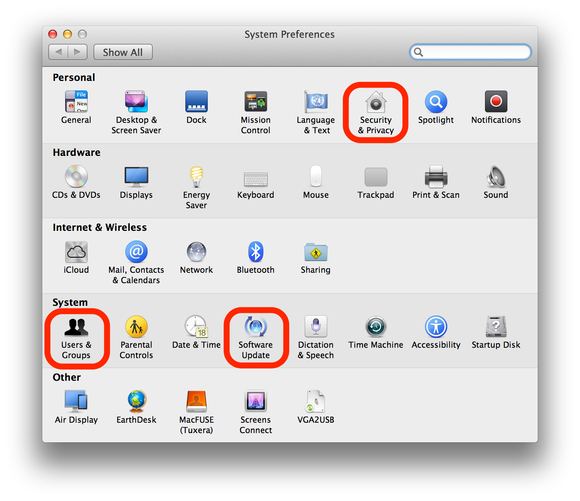How To Change Security Preferences On Mac For Apps
- How To Change Security Preferences On Mac For Apps Windows 10
- How To Change Security Preferences On Mac

How To Change Security Preferences On Mac For Apps Windows 10
Set Security preferences here. Settings here are divided into three tabs: • General: To add an extra layer of password security to a laptop (or a Mac in a public area), select the Require Password After Sleep or Screen Saver Begins check box. Snow Leopard then requires that you enter your login password before the system returns from a sleep state or exits a screen saver. Click the pop-up delay menu to specify when the password requirement will kick in (it’s immediate by default). Admin-level users can set the global security features in the For All Accounts on This Computer section. You can choose to disable the automatic login feature, force Mac OS X to require a login password each time that a System Preference pane is opened, automatically log off any user after a certain amount of inactivity, or use a secure (encrypted) virtual memory on your hard drive. You can also mark the Disable Location Services check box to turn off the Location feature, preventing applications from using information based on your Mac’s current location.
How To Change Security Preferences On Mac
If you don’t need the Remote on a regular basis, click the Disable Remote Control Infrared Receiver check box to select it. (But don’t forget to turn your IR receiver back on for your next movie night!) • FileVault: These controls allow you to set the master password for FileVault encryption within the current user’s Home folder, which makes it virtually impossible for others to access those files. Only an admin-level user can set the master password.
After the master password is set, you can click the Turn On FileVault button to enable FileVault encryption for the user who’s currently logged in; the user’s Login password becomes his FileVault password as well. • Firewall: Mac OS X includes a built-in firewall, which you can enable from this pane. To turn the firewall off entirely, simply click the Stop button. Any Mac hooked up to a network or the Internet should have the system firewall turned on. (The only exception is if you’re using a network that you know to be secure and your access to the Internet is through a router or sharing device with its own built-in firewall.) When the firewall is enabled, click the Advanced button to set firewall options. • To turn the firewall on with only Mac OS X application exclusions, click Block All Incoming Connections.
• To turn the firewall on with exclusions, click Automatically Allow Signed Software to Receive Incoming Connections. (This is the correct option for just about every Mac owner.) Any connection to a service (such as Web Sharing) or an application (such as iChat) that isn’t listed is blocked, but you can enable access for third-party applications as needed. Download tor browser for mac os x. To add a third-party application to the Allowed list, click the Advanced button at the bottom of the Firewall pane; then click the button with the plus sign. Navigate to the application that needs to communicate with the outside world.
Quicken won't automatically re-download deleted transactions, so you'll need to re-enter the transaction manually. Check to see if a missing transaction was moved to another account register, or if the missing transaction could have been incorrectly matched up to another transaction in your company's account register. Why are my transactions not downloading into quicken 2017 for mac?.